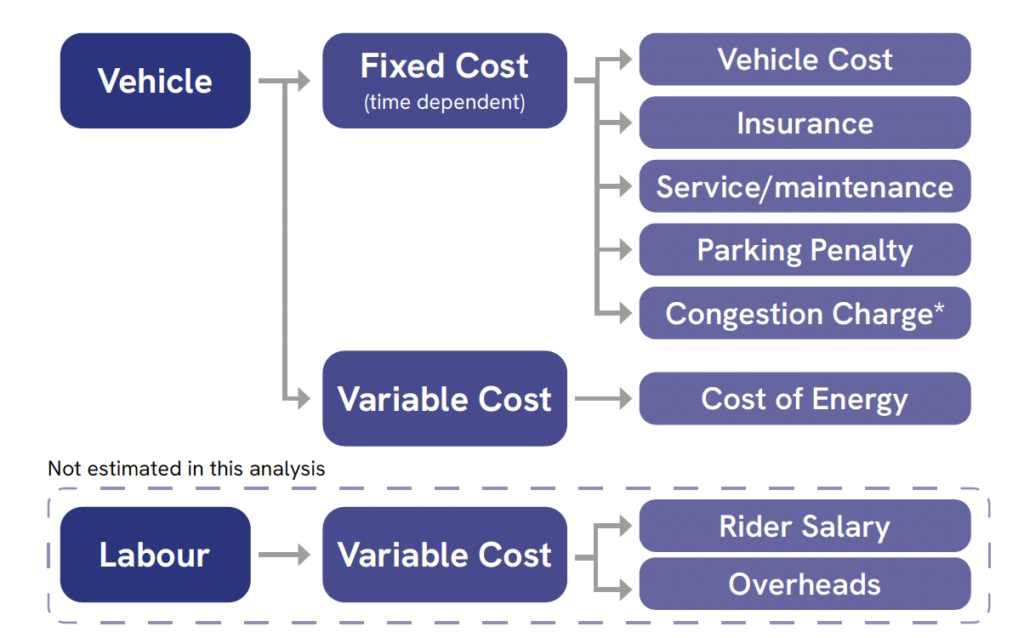A recent study found that an electric cargo bike, specifically a Bullitt cargo bike, is twice as efficient and over ten times cheaper than a van in urban areas. These are unprecedented results. Never has a study found this kind of result. According to the study, adding insurance, maintenance, depreciation, and energy costs, vans have up to 10 times higher expenses per parcel. When including fixed and variable costs, each delivery costs € 0.10 with the cargo bike, € 1.10 with a small diesel van, and € 1.05 with a small electric van. With € 0.10 per parcel, this would be the ultimate game changer for cargo bikes in parcel delivery.
The study, “Data-driven Evaluation of Cargo Bike Delivery Performance in Brussels,” was released in October 2023 by Kale AI, and it looked at the “operational advantages of cargo bikes over vans.” Kale AI is a London startup with a focus on revolutionizing urban logistics for a sustainable and efficient future, and the study, which was prepared for Larry vs Harry, used GPS data from a fleet of eBullitt cargo bikes operated by Urbike in Brussels and compared it to vans covering similar routes and stops.
The findings of the study highlighted the advantages of cargo bikes versus delivery vans, such as the fact that bikes can use shorter routes, can get to their destinations up to twice as quickly, take much less time to find a parking spot, are generally able to park much closer to their destination than vans, and their average speed can be higher than vans. Also, they have less emissions than diesel vans.
The average number of parcels delivered per hour by cargo e-bike is twice that of a van — an average of 10.1 packages per hour, as opposed to delivery vans, which can deliver 4.9 parcels per hour. With € 0.10 per parcel, will a delivery person earn a maximum of € 1.00 an hour? This cannot be through. On page 30, the report says labor costs are not included… I am puzzled here. What is the definition of ‘cheaper’? Did the study only look at the vehicle cost?
Also, the fact that delivery vans do only 4.9 parcels per hour is not substantiated. Most scientific research (using DHL, UPS, PostNL, Bpost, and other company’s data) shows it is closer to 20 parcels per hour. Also, this study’s microhub structure (and related cost of facilities and the middle mile into the microhubs) is unclear.

As with many company-sponsored studies in city logistics, this one is great for our students: fact check! And what would their substantiated conclusions and advice be to companies and cities? It’s crucial to read the fine print of these studies thoroughly. Only an honest, true, end-to-end story helps the involved sustainable entrepreneurs.
Walther Ploos van Amstel.
